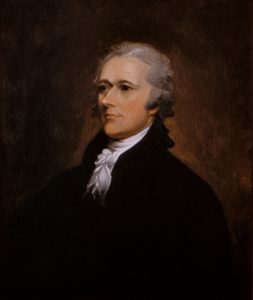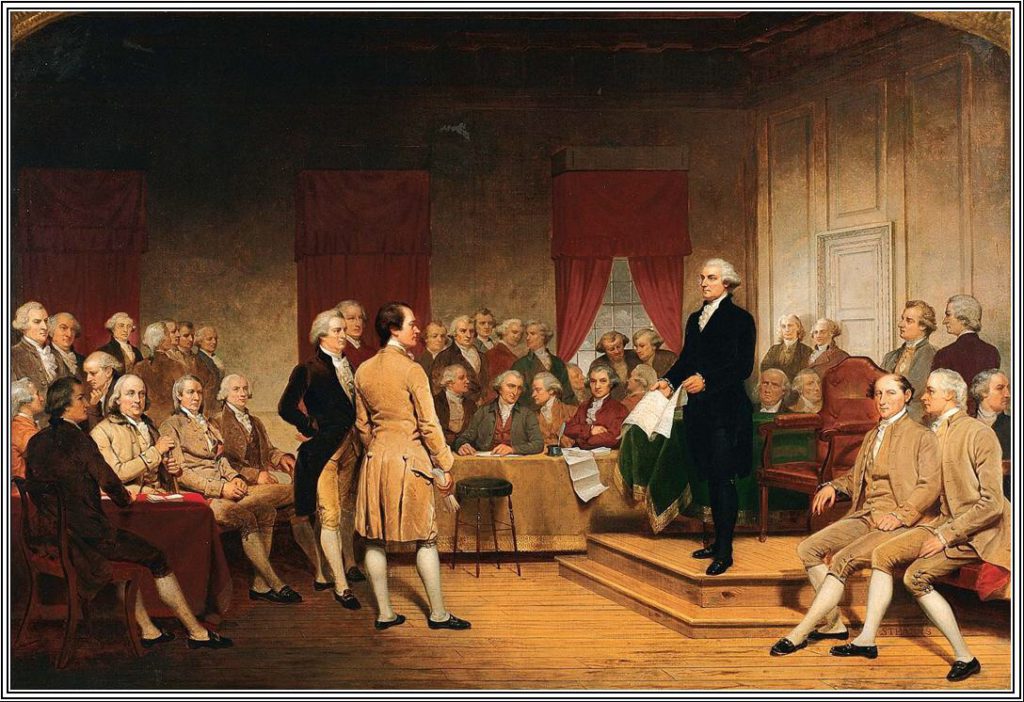 A discussion series were presented by Bethlehem Public Library and Humanities New York.
A discussion series were presented by Bethlehem Public Library and Humanities New York.
An American philosopher
Alexander Hamilton initiated and wrote 51 of the 85 anonymous Federalist Papers advocating for the adoption of the United States Constitution. We’ll be taking a closer look at several of these with humanities scholar Giacomo Calabria in an exciting series for adults grant-funded and sponsored by Humanities New York.
First up are Papers No. 1 and 6 on November 27, with No. 10 and 14 in the spotlight on
Papers No. 1 and 6
Monday, November 27, 7-8:30 p.m.
• Federalist No. 1 was published October 27, 1787 under the pseudonym Publius, the name under which all The Federalist papers were eventually published. This paper provides the outline for the rest of the essays and argues for the inadequacy of the Articles of Confederation. More on Wikipedia.
• Federalist No. 6 was published November 14, 1787 and is titled “Concerning Dangers from Dissensions Between the States.” It concludes that nations that exist as neighbors will be natural enemies of one another, unless brought together in a confederate republic with a constitution that will promote harmony through commercial interests rather than competition. More on Wikipedia.
Papers No. 10 and 14
• Federalist No. 10 was published November 29, 1787 and addresses the question of how to guard against “factions” (more specifically the “violence of factions”), or groups of citizens, with interests contrary to the rights of others or the interests of the whole community. More on Wikipedia.
• Federalist No. 14, which was published November 30, 1787, is a counterpoint to a major objection of the Anti-Federalists — that the sheer size of the United States would make it impossible to
govern justly as a single country. More on Wikipedia.
Papers No. 39 and 51
• Federalist No. 39, published January 18, 1788, defines what a republican form of government is and considers whether the nation is federal or national: a confederacy, or consolidation of states. Madison then states three rules that must apply for a nation to be considered a republic. More on Wikipedia.
• Federalist No. 51, which was published February 8, 1788, addresses means by which checks and balances can be created in government and also advocates a separation of powers within the national government. More on Wikipedia.
Papers No. 64, 70 and 78
• Federalist No. 64 was published March 5, 1788. It specifically focuses more deeply on the concept of treaties and how they are formed and defends the provision in the Constitution that grants to the president the power to make treaties with consent of two thirds of the Senate. More on Wikipedia.
• Federalist No. 70 argues for the unitary executive provided for in the United States Constitution. It was originally published March 15, 1788 and argues that unity in the executive branch is a main ingredient for both energy and safety. More on Wikipedia.
• Federalist No. 78 was published May 28, 1788 and was written to justify the structure of the judiciary under the proposed Constitution of the United States. In particular,
it addresses concerns by the Anti-Federalists over the scope and power of the federal judiciary, which would have been made up of politically insulated judges that would be appointed for life. More on Wikipedia.

